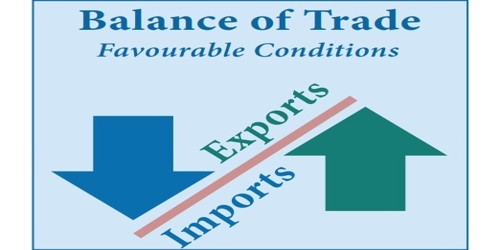
As you prepare for retirement, one of the most important decisions you will make is how to structure your investment portfolio. A well-structured portfolio can provide the income and growth potential needed to sustain your lifestyle through your retirement years. However, without a solid diversification strategy, your retirement savings may be at significant risk.
Understanding Diversification
What Is Diversification?
Diversification is an investment strategy that involves spreading your investments across a variety of asset classes and sectors to reduce risk. The underlying principle is that a diversified portfolio will typically experience lower volatility and a smoother ride than one concentrated in a single asset class or sector.
How Diversification Works
The basic idea behind diversification is that different investments react differently to market events. During times of economic turbulence, some assets may perform poorly while others may do well. By holding a mix of asset classes, you can reduce the impact of poor performance in any one investment. For example, when stock prices decline, bond prices may remain stable or even increase, helping to offset losses in the equity portion of your portfolio.
Why Diversification Is Crucial for Retirement Planning

1. Managing Risk
One of the primary reasons for diversifying your retirement portfolio is to manage risk. As retirees may rely heavily on their investment accounts for income, preserving capital becomes essential. Diversification allows you to minimize exposure to any one investment, protecting your portfolio from the volatility that can accompany specific assets.
2. Smoothing Out Returns
A diversified portfolio can help smooth out returns over time. While individual assets may experience sharp fluctuations, a diversified approach can lead to more consistent returns, making it easier to plan for withdrawals in retirement.
3. Protecting Against Inflation
Inflation is a significant concern for retirees. The cost of living tends to rise over time, which means your purchasing power can erode if your investment returns do not keep pace with inflation. By diversifying into assets such as real estate and commodities, which tend to appreciate with inflation, you can help protect your portfolio's value.
4. Providing Multiple Income Streams
A well-diversified portfolio can provide multiple income streams during retirement. For example, dividends from stocks, interest from bonds, and rental income from real estate can all contribute to a reliable income stream. Having various sources of income can reduce reliance on any single source, providing greater financial stability.
5. Aligning with Your Risk Tolerance
Diversification allows you to align your investments with your risk tolerance and investment goals. By selecting a mix of asset classes that match your comfort level with risk, you can create a portfolio that reflects your financial needs and retirement timeline.
Types of Assets to Include in Your Diversified Portfolio
When building a diversified retirement portfolio, it is essential to include a variety of asset classes. Here are some common components to consider:
1. Equities (Stocks)
Stocks have the potential for high returns, making them a crucial component of growth in a retirement portfolio. However, they are also inherently volatile. Consider allocating your stock investments across:
Large-Cap Stocks: Established companies with a market capitalization exceeding 10 billion dollars. They are generally considered less risky than smaller companies.
Small-Cap Stocks: Smaller companies that can offer higher growth potential but also come with increased risk.
International Stocks: Investing in companies outside of your home country can provide exposure to emerging markets and further enhance diversification.
2. Fixed Income (Bonds)
Bonds are a more stable investment that can provide regular income and preserve capital. They typically behave differently than stocks, helping to offset stock market volatility. Key types of bonds to consider include:
Government Bonds: Issued by national governments, these are generally considered low risk but may offer lower returns.
Corporate Bonds: Issued by companies, these can offer higher yields compared to government bonds but come with higher risk.
Municipal Bonds: Issued by local governments, these bonds often provide tax advantages and can contribute to your income stream.
3. Real Estate
Real estate can be an effective inflation hedge and provides rental income. You can invest in real estate directly by purchasing properties or indirectly through Real Estate Investment Trusts (REITs).
4. Commodities
Investing in commodities such as gold, silver, and oil can help protect against inflation. These assets often move independently of stocks and bonds, adding a layer of diversification.
5. Cash Equivalents
Cash equivalents such as money market funds, Treasury bills, and certificates of deposit (CDs) provide liquidity and stability. While these options typically offer lower returns, they protect capital and provide funds for short-term needs.
Strategies for Building a Diversified Retirement Portfolio

1. Asset Allocation
Asset allocation is the process of determining what percentage of your investment portfolio should be in each asset class. Your allocation should be based on your risk tolerance, investment goals, and time horizon. Here are some general guidelines:
Conservative Allocation: If you are closer to retirement, consider a higher proportion of bonds and fixed income to preserve capital.
Balanced Allocation: A mix of stocks and bonds may be suitable for those within a few years of retirement who desire growth but with manageable risk.
Growth-Oriented Allocation: Younger investors can afford to take on more risk with a higher percentage of equities, focusing on growth potential before retirement approaches.
2. Regular Rebalancing
Over time, different asset classes will perform differently, leading to shifts in your portfolio's asset allocation. Regularly rebalancing your portfolio can help maintain your desired allocation and ensure that you are not overly exposed to any single asset class. Consider rebalancing annually or when your allocation deviates significantly from your target.
3. Utilize Target-Date Funds
Target-date funds are a convenient option for retirement planning. They automatically adjust your asset allocation as you approach your target retirement date. These funds become more conservative over time, providing a simple, hands-off approach to diversification.
4. Invest in Index Funds and ETFs
Index funds and exchange-traded funds (ETFs) provide instant diversification by tracking a broad market index. They typically have lower fees compared to actively managed funds, making them a cost-effective option for building a diversified portfolio.
5. Consider Professional Guidance
Working with a financial advisor can provide valuable insights and help ensure your portfolio aligns with your retirement goals and risk tolerance. Financial advisors can also assist in creating a personalized investment strategy that emphasizes diversification.
Common Mistakes to Avoid When Diversifying
While diversification is essential, implementing it effectively can pose challenges. Here are some common mistakes to avoid:
1. Over-Diversification
While diversification is a key strategy, over-diversifying can dilute your returns. Holding too many investments can make it difficult to monitor your portfolio's performance and may lead to higher costs. Aim for a balanced approach that includes a reasonable number of diversified assets.
2. Chasing Performance
Many investors make the mistake of constantly chasing the latest trend or investment that has recently outperformed. This approach can lead to a poorly diversified portfolio and increased volatility. Stick to your long-term strategy and avoid making impulsive decisions based on market fluctuations.
3. Ignoring Correlation
Not all investments behave the same way; some may be highly correlated, meaning they move together in response to market events. Be mindful of mixing investments that do not provide meaningful diversification benefits.
4. Neglecting to Review the Portfolio
Failing to regularly review and adjust your portfolio can lead to misalignment with your investment goals. Be proactive in assessing your investments and making necessary adjustments based on changes in your financial situation or market conditions.
5. Setting It and Forgetting It
While a diversified portfolio can provide stability, the market landscape is always evolving. Regularly reassess your investment strategy and make adjustments to ensure your portfolio remains aligned with your retirement objectives.
Conclusion

Diversifying your retirement portfolio is not just a strategy for managing risk; it is a foundational principle for building a secure financial future. By including a mix of asset classes, employing proper asset allocation, and using regular rebalancing techniques, you can create a portfolio that provides stability, growth potential, and income in retirement.
As retirement approaches, take the time to understand the importance of diversification and how it can help you achieve your financial goals. Regularly review your strategy, stay informed about market changes, and be proactive in managing your investments. With a diversified retirement portfolio, you can enjoy peace of mind as you navigate the challenges and opportunities that retirement brings.
Related
-
Financial News

-
Cryptocurrency

-

-
Forex Market

-
Economic Indicators

-
Forex Market

